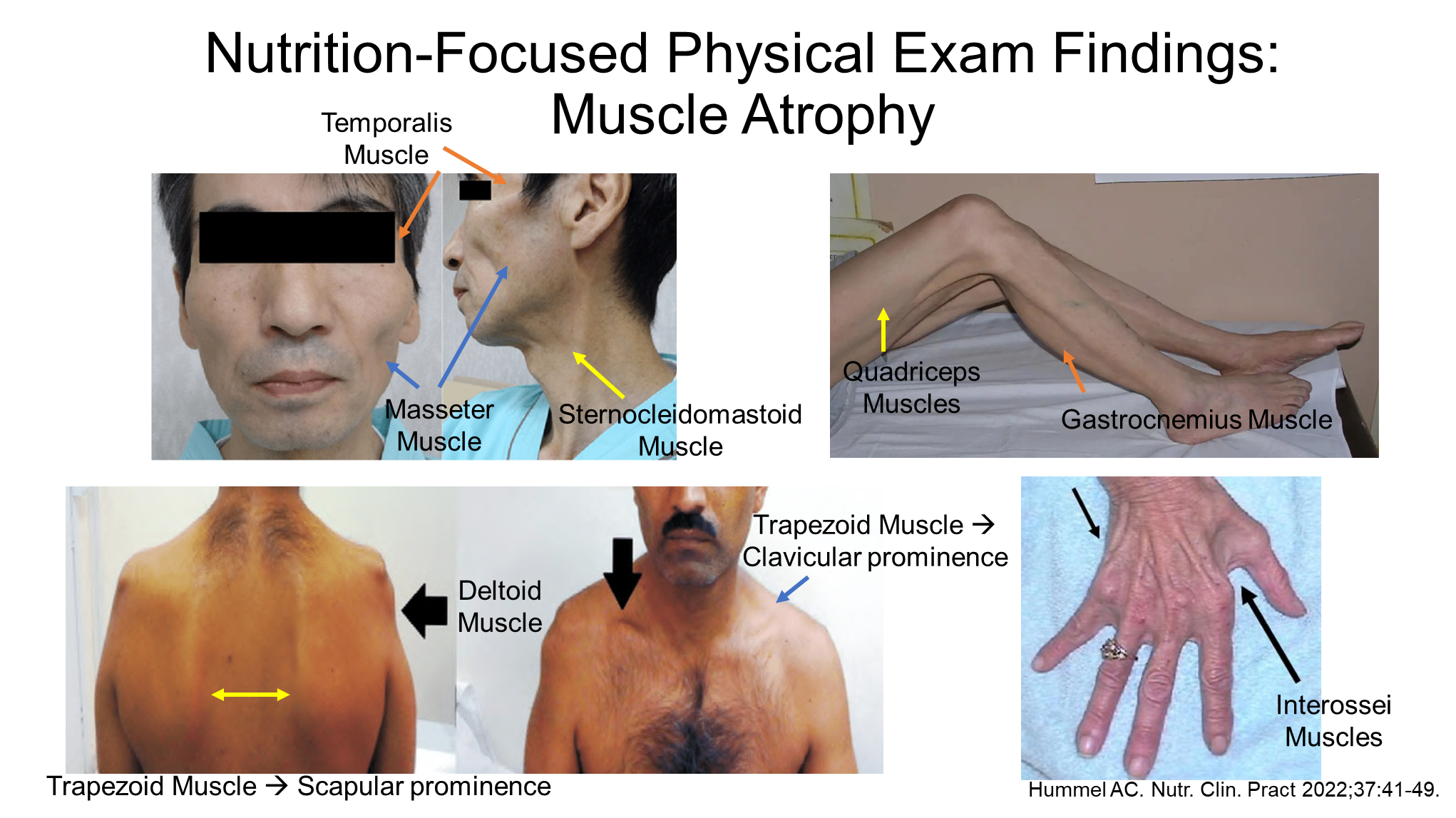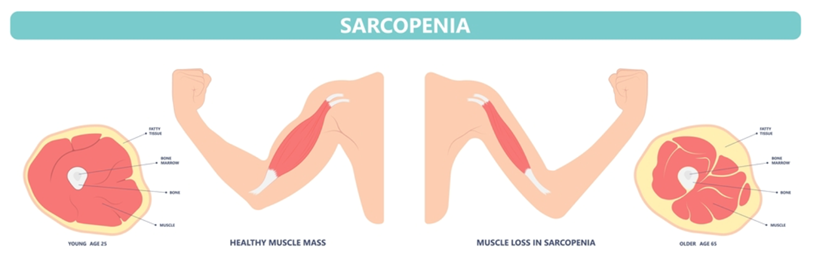Illness Associated Malnutrition
1/8
There's no tags or description
Looks like no tags are added yet.
Name | Mastery | Learn | Test | Matching | Spaced |
|---|
No study sessions yet.
9 Terms
How do you classify someone with malnutrition?
Malnutrition diagnosis is based on having at least one of each phenotypic criteria and etiologic criteria
1) Phenotypic
→ Weight loss
→ low BMI
→ reduced muscle mass
2) Etiologic Criteria
→ reduced food intake or assimilation
→ Inflammation
Need at least one from each of these categories in order to classify a patient as having malnutrition - based on these numbers we can categorize them based on severity
How can accessory muscle use lead to malnutrition?
Accessory muscle used leads to increased energy expenditure as is the case in cardiac or respiratory issues
→ this may lead to malnutrition because they need additional energy in order to activate these muscles
What are the physical exam findings associated with muscle atrophy may be seen with malnutrition? (8 muscles)

Physical exams are associated with muscle atrophy
1) Temporalis, Masseter, and Sternocleidomastoid Muscle of the face are sunken and atrophied
2) Indentation below the shoulder due to atrophy of the Deltoid muscle
→ more prominent scapula and clavicle due to atrophy of trapezoid muscle
3) Interossei Muscles of the hands will show the tendons in the hand due to atrophy
4) Quadricep muscle and Gastrocnemius muscle in the leg are atrophied and show wasting
You may also see loss of fat pads
What is Kwashiorkor?
Severe protein malnutrition
→ seen commonly in children and will present with peripheral edema with a distended abdomen and muscle atrophy
→ patients may also have a round face and growth retardation
→ this is treated with protein supplementation
What is Marasmus?
Inadequate caloric and protein intake
→ results in both macronutrient and micronutrient deficiencies, and has a better prognosis that Kwashiorkor
→ patients are severely underweight with wasting of subcutaneous fat and muscle
→ they may also have diarrhea, dry skin, and brittle hair
→ treated with calories
What is Sarcopenia and Cachexia

Sarcopenia is loss of muscle mass and function that can occur at any age
→ a normal issue that occurs with age, where we lose around 1 percent of muscle mass per year
→ occurs due to imbalance in protein synthesis via degradation
Cachexia is weight loss (fat and muscle) due to illness causing inflammation
→ HIV and Cancer are common issues that cause Cachexia
What is the difference between Anorexia and Bulimia?
Anorexia patients severely restrict their caloric intake
→ will be underweight and commonly have macronutrient and micronutrient deficiencies
Bulimia Nervosa is binge eating followed by purging whether that is laxatives and forced vomiting
→ patients will be normal weight or overweight and will present with electrolyte abnormalities due to diarrhea or vomiting
What is Parenteral Nutrtition? What is the risk with this?
Feeding through a vein
→ has high risk of infection and thrombosis as well as fatty liver and cholestatic disease
→ if you use this for a long time the mucosa of the small bowel can atrophy
→ may also cause cholestasis due to prolonged intestinal and biliary stasis leading to bacterial translocation
What is Refeeding Syndrome? How does this occur

Refeeding Syndrome is where you restart feeding in a malnourished person leading to death
1) During starvation we use up protein and fat stored in our body in order to create energy due to lack of carbohydrates
→ because of this, if we start refeeding after starvation it will lead to a spike in glucose leading to a increase in insulin and decrease in glucagon
→ this increase in Insulin leads to uptake of glucose, phosphorus, thiamine, magnesium, potassium, and calcium into the cell
→ this leads to hypokalemia, hypomagnesemia, hyponatremia, and hypokalemia
2) This ends up leading to patients that have muscle weakness, arrhythmias, and tremors
→ Thiamine deficiency can be seen so Wernicke’s or Beri Beri